We travelled from Hanoi to Hué on the very train line we'd watched with fascination as the train thundered through one of Hanoi's narrow streets with little breathing space on either side. Unfortunately our trip began in darkness, so we couldn't see the spectacle from the other side of the glass.
It was our first journey on a sleeper-train, although with the clattering and rumbling from the wheels on the bumpy tracks below, little sleep was to be had, despite the modern, comfortable cabins. Dinner and breakfast were hand- delivered directly to our cabin by the polite staff.
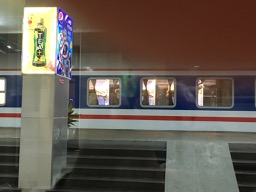
Our home for the journey to Hué
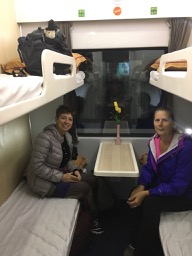
Our cabin
When we arrived in Hué and checked into our hotel, we were definitely feeling a little jaded. There was no chance for a rest though, we were off on another boat trip, this time on the Perfume River to visit Thien Mu Pagoda. Unfortunately, it poured with rain, putting a bit of a damper on the visit when compounded with our fatigue, but it was worth the visit for the spectacle of Buddhist monks sprinting around the complex in waterproofs, their orange robes dragging in the puddles beneath.
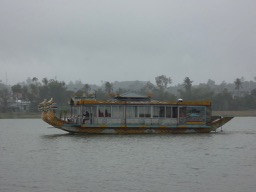
Perfume
River in the rain
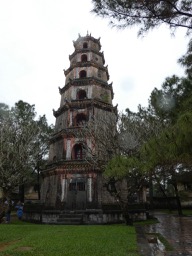
Thien
Mu Pagoda
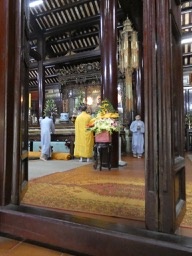
Buddhist
monks at prayer
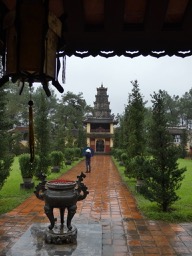
The pagoda was constructed in honour of an old lady met by Lord Nguyen Hoang on his travels from Hanoi, who told him to build his city where his incense stick stopped burning as he walked along the river. The pagoda became a centre of Buddhist learning and reached notoriety in 1963 when one of the monks based there burned himself to death in Saigon in protest at the regime of the time.
Far removed from these brutal events, observing the Buddhist monks chanting their prayers was a wonderfully peaceful experience.
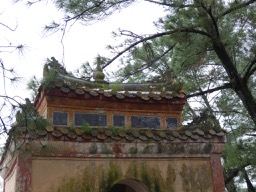
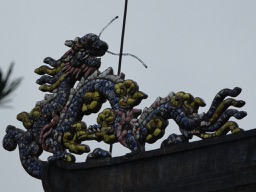
Roof
carvings at Thien Mu
Binh invited us to get up extra early the next day to make an additional visit to the Mausoleum of Tu Duc. Although it didn't sound too inspiring a reason to arise extra early, it was well worth the trip to wander the beautiful gardens and enjoy a performance by traditional musicians. From there it was on to Hué's famous Imperial Citadel.
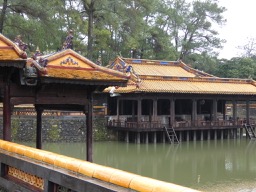
Mausoleum
of Tu Duc
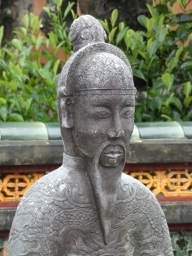
Warriors
guarding the tomb
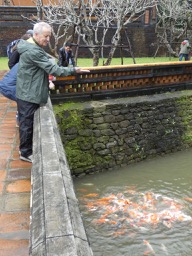
Phil
gets a fish fix.
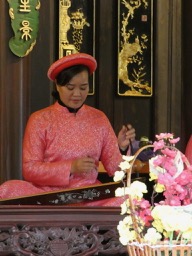
Traditional
music
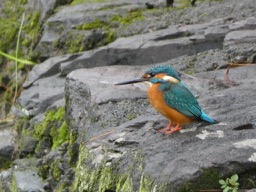
Someone
else wanting a fish fix.
The rain which plagued our visit to Hué continued during our tour of The Imperial Citadel, built by the Nguyen Dynasty. A copy of the Forbidden City in Beijing, the construction required 20,000 workers. Much of the inner part was destroyed in the Tet Offensive in 1968 and rebuilding is still progressing. In parts, bullet holes could still be seen in the walls.
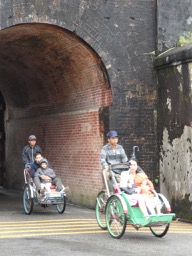
That's
one way to arrive
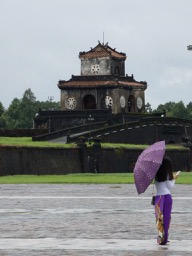
Approach
to Imperial Citadel
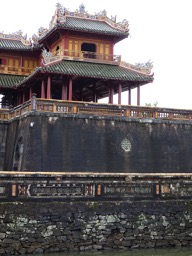
Front
of the Citadel
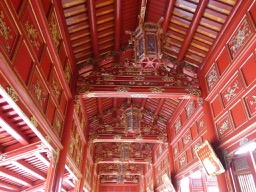
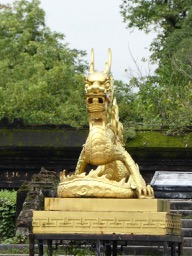
Bling!
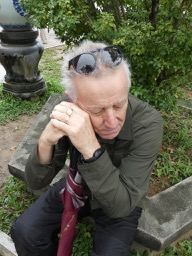
A
spot of temple fatigue
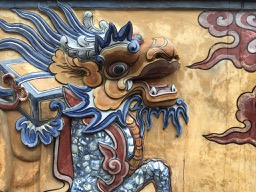
Towards the end of our visit, the rain finally stopped and the waterproofs were ditched.
We decided to get off the bus in the centre of Hué, close to the city's market, to explore by ourselves for the afternoon.
The market was an indescribable experience. Words cannot do justice to the surreal experience of wandering the warren of corridors between stalls, which were barely wide enough for rabbits to pass, while stallholders and customers scurried about and their wares assaulted the senses. It was a magical experience but one too frenzied for us to have remembered to take photographs inside the market hall.
To recover we strolled back to the hotel, crossing the Perfume River via a bridge laden with rush-hour scooters and enjoyed a sculpture garden at the local riverside park.
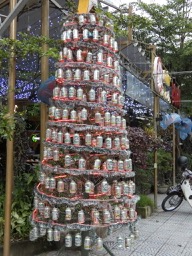
Thirst
quenching Christmas Tree which, like all Christmas decorations,
will remain up until the Chinese New Year
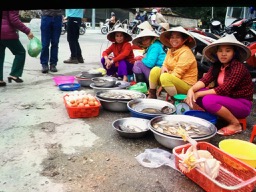
Traders outside the market hall
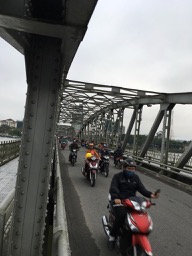
Rush
hour scooters
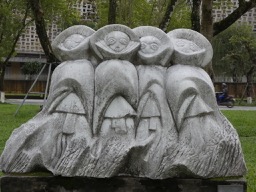
Sculpture
Park
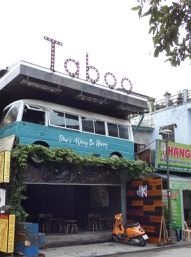
Bar
near our hotel.
We rounded off our time in Hué with a visit to the DMZ bar with several of our tour buddies. At this western style hostelry, we managed to alarm the locals with our dancing skills.